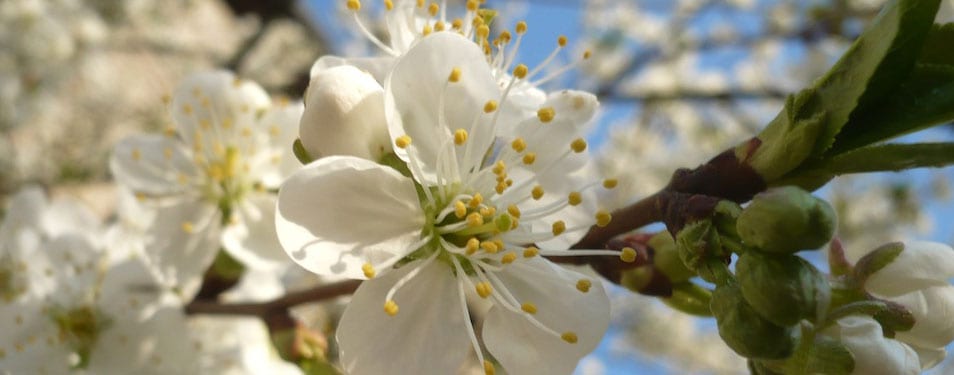In my opinion, ‘spirituality’ in the broadest sense arises naturally when one finds inner contact with one’s own vitality. In doing so, one encounters oneself in a bottomless space that exists beyond any form of ‘person’ or ‘I’. Consciousness’, on the other hand, seems to be the way we perceive or experience ourselves, others and the world in the present moment.
The two phenomena of ‘spirituality’ and ‘consciousness’ meet at an inner place that I cannot precisely describe. For lack of a better term, I call it ‘Self’. Consciousness and spirituality are mutually evolving; one arises from the other. Each level of consciousness produces a form of spirituality that is typical of it, and spirituality itself seems to be an inner motor of this development.
In the following I refer to the levels of consciousness as introduced by Wilfried Nelles in his model of the evolution of consciousness.
Spirituality and self-awareness Outwardly, we are all adults. However, inwardly mature spirituality is alien and incomprehensible to modern consciousness because it deals with facts. Adult spirituality deals with the present facts of one’s life without trying to change them. If change happens, it comes from the movement of life itself, not from our plans for it.
Such a spirituality surrenders to life as it happens, with all that it demands and gives. It finds its own vitality, its ‘soul’ or, in other words, its bottomless self, in the acceptance of these facts. Adult spirituality lives in surrender, in surrender. But ‘surrender cannot be made’ (Nelles). It happens when you open yourself to it.
It appears when the searching and struggling ego-consciousness has become obsolete and begins to disappear. In the process, the way of experiencing that belongs to youth (and its collective side, modernity) and is right for it dies within. With it, the familiar image of ourselves, others and the world that has been necessary for survival is shattered. It follows that adult spirituality is the result of a death.
This inner process of dying is accompanied by a very real fear of death, with everything we know from the physical process of dying in terms of denial, anger, negotiation, grief and finally acceptance of loss. In retrospect the inner death turns out to be a birth, but we do not know this beforehand, nor does it feel like one while it is happening. No one can choose the process of inner death. You don’t know when it begins, and you certainly don’t know where it will lead when you are in the middle of it. A prominent contemporary expression for this is ‘crisis’, a term commonly used in Christian mysticism is ‘the night of the soul’.
Let’s look further: adult spirituality is internal and comes from within. It does not need anything from outside for its existence. I am simply with myself as a compassionate witness to my own life. I am aware of what my body feels and does, but I am not my body. I perceive what my feelings feel and do, but I am not my feelings. I am aware of what my thoughts think and want, what images and patterns they create and how they work, but I am not my thoughts. I let them come and go without following them, for example by analysing them. I let it (thinking) think, but I (my person) do not think. I am the space in which all this happens, or in other words, the entity that perceives it all.
In the beginning I called this entity ‘one’s own aliveness’. It has no ground, no boundaries, because it is not me. It does not have and is not the form of my person, but rather its formless origin. Contact with such inner groundlessness normally causes unfathomable horror, dizziness and confusion. This is where the ‘shudder of the numinous’ has its place, although this term is only a trivialisation of what we come into contact with here. The other side of the abyss is freedom. This freedom has nothing to do with ‘autonomy’, because it does not refer to something from which it would have to separate or emancipate itself and thus remain bound. This freedom is as bottomless as our own vitality and therefore immense. The joy associated with it is also immense. In contact with our inner vitality, we can therefore prepare ourselves for bottomless terror and unbounded joy. The Bible likes to call this joy ‘bliss’.
As I begin to notice my physical sensations, my feelings and my thoughts, without continuing to confuse them with myself, I gradually become aware of myself. And only then. The confusion between myself and the person inside who says ‘I’ dissolves. Self-awareness is born. It may still be small and sometimes unstable, but it is there. Self-awareness means nothing more than that the living being within me is allowed to perceive how I am thinking, feeling and physically present in the present moment. Before I could not really perceive myself because I had confused myself with what I was thinking, feeling and physically sensing.
By perceiving myself in the present moment and being connected to myself, I automatically begin to perceive others and the world differently than before. My ideas about them that I have developed in my ego-consciousness, my dependencies from the group-consciousness and the mergers from the symbiotic oneness-consciousness no longer act as filters, distorters or absorbers of what or who appears. What is simply appears.
Outside now, several things happen: it is as if a curtain is pulled away, an indistinct veil, and it becomes light. Then it seems that the same vitality dwells in everyone, that everyone has to deal with similar pains and longings, and that there is no separation. The connection to everything that you so desperately sought as a young person, and so unconsciously and consistently avoided, is established. It seems completely natural. And something recedes into the background: the personal.
I no longer take so personally what goes on inside me, how others treat me and how the world appears to me. It all happens without effort, as if of its own accord. You cannot make it happen, you can only give it space within yourself. This impersonal perception, no longer related to a specific person, is a peculiar phenomenon that cannot be compared to anything else. It seems that this kind of perception arises immediately with the birth of self-awareness (and vice versa): the more my experience of the world and myself turns away from the external and towards the internal, the more impersonal my perception becomes. By ‘external’ I mean anything related to the environment, be it a perception of the body in relation to the environment, a feeling related to the environment, or my thinking reflecting the environment.
In everyday language, ‘impersonal’ is often associated with ‘cold’ or ‘rejecting’. Here the opposite is true. Impersonal’ simply means that I no longer relate what happens to me as a person, but leave it where it is. The distinction between what concerns me and what does not becomes easier and more natural. My constant reactions subside. I see that most of what happens to me and others has nothing to do with our individuality. It is simply not personal, but reflects something collective, generally human. Spirituality in self-awareness follows this liberation from the personal and at the same time makes it possible.
Spirituality and ego-consciousness Let us look at modern consciousness. The youthful ego-consciousness of our time wants nothing to do with the facts of life. Instead, it seeks a way out of it, possibly a spiritual one. It finds this way out in its concepts and ideas about life: about itself, about others and about the world. People and societies in ego-consciousness find their vitality, their ‘soul’, in what they think. They literally live in their thoughts about themselves, others and the world (and not with themselves, others and the world).
This is as inevitable and necessary as any adolescence, but it leads to curious misconceptions about spirituality.
The first misconception is that you can put together your own spirituality: take a little Christianity, add some Zen Buddhism or Hinduism, and spice it up with a good pinch of shamanic practices of any origin, whether Mexican, Siberian, Celtic or ancient Germanic. Suddenly you feel like a spiritual person, and are even perceived and valued as such. The fact that you are structurally Christian through and through, completely independent of any church affiliation, if you were born into a European family, is not noticed.
Another misconception is that all you have to do is put enough effort into your spiritual practice, such as meditating or doing Tai Chi in the park, and something like vitality and inner peace will emerge, perhaps as a harbinger of enlightenment to come.
The most beautiful misunderstanding of all comes from the idea that spirituality has a goal, such as inner peace, fulfilling relationships or joy in work. But the idea that something must have a goal in order to be worthwhile or meaningful belongs to youthful ego-consciousness, not to spirituality itself.
Spirituality is nothing more and nothing less than the form that direct contact with one’s own vitality takes at the respective level of consciousness. In the ego-consciousness, therefore, it comes into contact primarily with concepts, with imagined vitality, with an individual idea of it. This has nothing to do with the actual inner vitality. That cannot be thought or imagined at any level of consciousness. In the fourth level, self-consciousness, one begins to feel or know something of this impossibility. One even begins to come to terms with it.
Spirituality in Group Consciousness Childish group consciousness sees itself at the mercy of the facts of group life in such a way that one’s own life seems insignificant. The facts of one’s own life are the facts of the group and vice versa. Spirituality offers a natural access to the group and at the same time an effective way of banishing one’s own powerlessness in the face of the facts of life determined by the group.
People in group consciousness have their vitality, their ‘soul’, in the group, or more precisely, in their membership of the group. Psychologically, they do not have their self as an individual, but in the group to which they belong. Spiritually, their life takes place as part of their group, not within themselves as individuals. The church service in medieval Europe, for example, and the spiritual rituals associated with it, such as confession, communion, prayer and blessing, could ensure de facto group membership.
For people with group consciousness, these are facts that arise directly from their own experience. At that time they created a psychological reality that was as stable as science is today. It is only for ego-conscious people that these processes become superstition. For people with symbiotic oneness consciousness, the question does not even arise. Here their own liveliness is at the same time the soul of their natural environment and their self. They are inseparable.
In other words, in symbiotic oneness consciousness (as in primitive societies, for example), the inner vitality, the self and the natural environment still appear as one and the same. In group consciousness, my self must move towards the group. In the primary group, the family, I find my self in my parents. My vitality now has to be shaped according to the requirements of group membership. Most of the time this means restricting or suppressing my vitality. I do this myself, without any external compulsion, whenever my own vitality, the life I was born with, could jeopardise my belonging to the group.
I develop symptoms as a means of coping or maintaining balance. They help me to remain part of the group and alive at the same time. It now seems to me that a person’s inner vitality dresses itself in symptoms in order to continue to exist in them. In group consciousness, our symptoms are the form our vitality takes when our membership of the currently relevant group is at stake.
In my ego-consciousness, my self has moved on to the ideals or ideas and images I have formed of myself as an autonomous ego, of others and of the world. This means that my vitality must now be framed according to the requirements of belonging to my ideals. Again, this means a restriction and suppression of my vitality, to an even greater extent than in group consciousness. I do this myself, without any external compulsion, whenever my own vitality, the life I was born with, could jeopardise my belonging to my ideals, my self-image and my world view.
As a means of understanding or balance, I also develop symptoms here, but in a different, mirrored form. The most prominent form is neurosis, both psychological and somatic. Neurosis helps me to stay true to my ideals and still be alive. Again, it seems to me that the vitality of a person in their ego-consciousness disguises itself in neurosis in order to continue to exist in it.
In the ego-consciousness, neurosis is the form of my vitality when my belonging to the idealised environment is at stake. The autonomous ego has its vitality in neurosis; more than that, the autonomous ego exists only as neurosis. Spirituality is present, but it is not related to inner vitality, but to its opposite, to the concepts and ideas about it.
Inner Death or the Spiritual Turning Point I come back to the beginning, to inner death, in which survival patterns, expectations, beliefs and images of oneself and the world are destroyed. With it dies everything we have learned to survive, so to speak, the first thirty, forty, fifty years of our existence. Now it becomes clear that this inner death is itself a spiritual process. In it we meet the spiritual process itself, because it connects us with our aliveness. Inner death dissolves the confusion with the external environment that we needed to survive in the womb, in childhood and in adolescence. At the same time, inner death connects us to our Self. It enables us to have something like confidence in our limitless aliveness.
Spirituality without death does not exist, or in other words: inner contact with one’s own vitality is apparently not possible at all without death. At the beginning of human existence, many hundreds of thousands of years ago, this was a very physical process involving the death of others. Human spirituality in its early stages probably arose from ritualised communal hunting and the associated sacrificial rites (see Wolfgang Giegerich: Killings. Gewalt aus der Seele]).
Human spirituality appeared as a first awakening of human consciousness in the sense of “I am” in the face of the deliberately caused death of others, in the face of killing. In its early stages, spirituality and consciousness are practically the same thing. Ritual killing interrupts the total immersion of early humans in their natural environment and thus necessarily gives rise to the ‘I am’ in the form of symbiotic unity consciousness.
This means that with the inner death in the transition from ego-consciousness to self-consciousness, as I have just tried to describe, spirituality comes into its own, in the sense of awakening from a kind of powerlessness. It returns to where it once began. At the same time, it abolishes its beginning and transforms it from an external to an internal process. Perhaps spirituality is nothing more than this human ability: to transform the external into the internal, i.e. to transcend it. It does this in different ways at different levels of consciousness, helping to shape the form of that level of consciousness.
In the LIP, the anchors for symbiotic unity consciousness and self-consciousness are opposite each other. Adult self-consciousness takes up the symbiotic unity consciousness again and gives it a completely reversed form: we are no longer related to our environment as we were in the womb, but to our inner self, no longer embedded in a natural environment, but in our bottomless self.
Conclusion In summary, in the ego-consciousness, spirituality refers to our ideas and concepts of it, to what we think about it. In group consciousness spirituality lives in feeling, in symbiotic unity consciousness in physical realisation. Spirituality cannot leave its level of consciousness unless it breaks through it. After that there is no going back.
Spirituality is the explosive for levels of consciousness. As soon as you engage with it, as soon as you focus on the inner vitality with which we are born, the current level of consciousness begins to crack. It ceases to function unquestioningly as a valid format for self-perception and perception of others. A spirituality that refers to the inner vitality becomes a midwife into the now appropriate consciousness, into an expanded inner space, into the open.





0 Comments